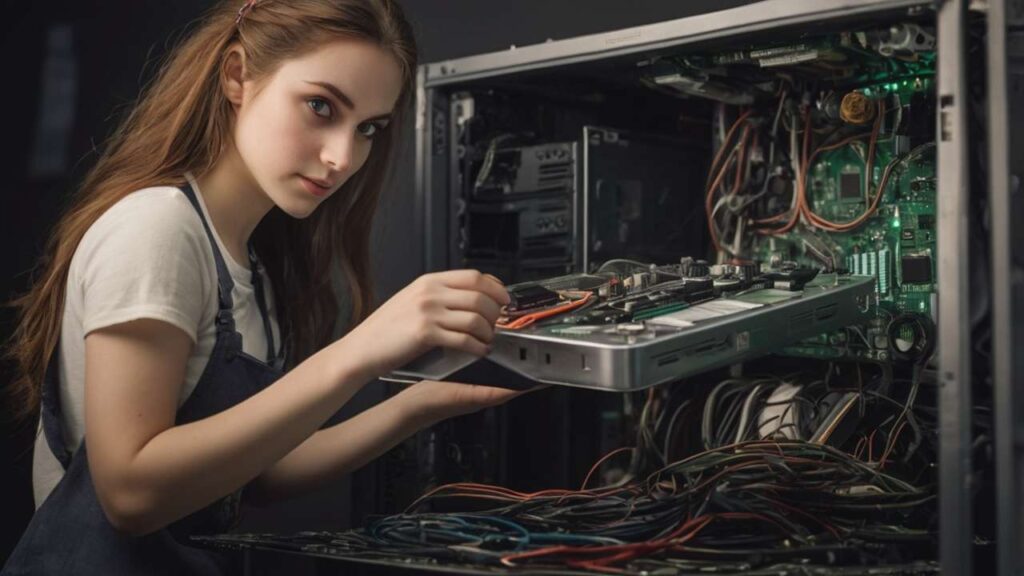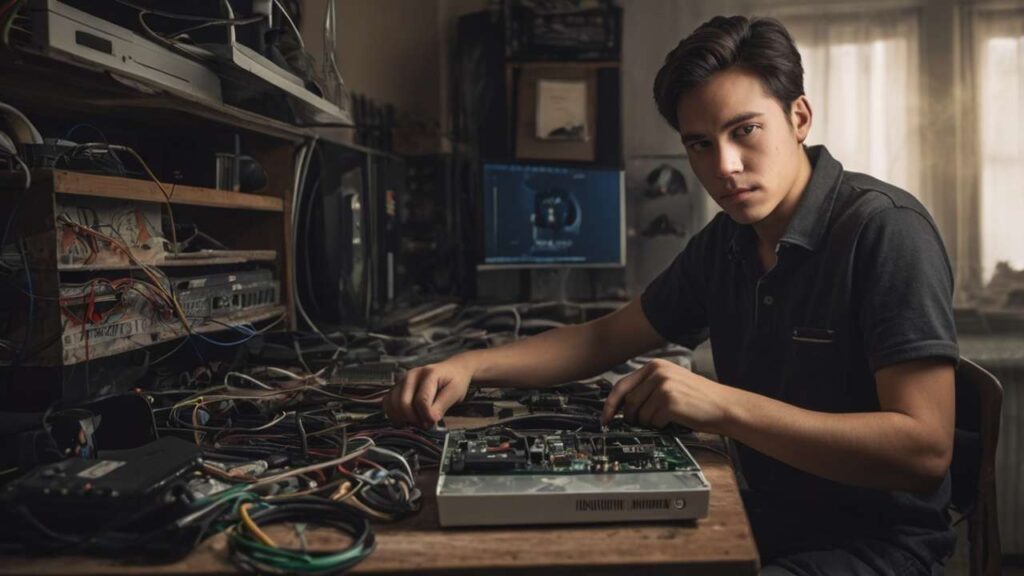It’s a gut-punch moment for any gamer: you hit the power button, and your console refuses to load, spits out a disc, or blasts fans like a jet engine about to take off. That sinking feeling usually sparks the big question—Repair or Replace? A Cost-Benefit Analysis for Your Broken Game Console becomes more than just a catchy phrase; it’s the choice standing between you and your favorite games.
I’ve been there myself. My PS4 once roared so loudly it could drown out a vacuum cleaner. I thought it was dead, but a technician explained it just needed new thermal paste and a deep fan cleaning. That fix cost me less than a weekend road trip and saved hundreds compared to buying a new console. Sometimes repair is not just cheaper—it’s smarter.
- The True Cost of Console Repair vs. Replacement
- Data-Saving Benefits: Why Repair Keeps More Than Money
- The Jet Engine Console and Thermal Solutions
- HDMI Port Damage: More Common Than You Think
- Nintendo Switch and the Charging Nightmare
- Warranties on Repairs: Peace of Mind Without the Retail Price
- The Environmental Argument: E-Waste Reduction
- Extending Console Lifespan With Better Habits
- Case Study: The PS5 HDMI Crisis
- Looking Ahead: Future Conversations in Console Care
- FAQs
The True Cost of Console Repair vs. Replacement
Let’s talk numbers, because that’s usually what drives the decision. A brand-new PS5 still runs around $500–$600 if you’re lucky enough to find one at retail. Refurbished units might shave off $100 or so. Meanwhile, typical gaming console repair prices look like this:
- HDMI port replacement: $80–$150 (professional micro-soldering work)
- Thermal paste and fan cleaning: $60–$100
- Disc drive repair or replacement: $100–$200
- Power supply replacement: $80–$120
Even the dreaded “blue light of death” on a PS4 can sometimes be fixed for under $200. Compare that to buying a whole new system and starting over, and the cost-benefit analysis becomes obvious: repairs often win.
Professional shops, like Best Gaming Console Repair Recommendations in North Carolina, stress that most repairs come in well under half the cost of a new console. That’s not just affordable—it’s logical.
Data-Saving Benefits: Why Repair Keeps More Than Money
Consoles aren’t just hardware; they’re treasure chests of saved games, profiles, and digital libraries. Replacing a broken console often means risking game saves, unless you’ve backed them up to the cloud. Not everyone remembers to do that.
Repair keeps your original system alive, meaning your data stays safe. I once had a customer explain how a repaired HDMI port on their Xbox “saved” over 200 hours of progress in Elden Ring. That’s not just value retention—it’s sanity preservation.
The Jet Engine Console and Thermal Solutions
One of the most common complaints gamers voice is about fan noise. A console sounding like a Boeing 747 usually needs a thermal paste replacement and dust cleaning. This service, while cheap, dramatically extends the console’s lifespan and improves performance.
Technicians often use high-quality thermal compounds like Arctic MX-4 or Noctua NT-H1, which transfer heat more effectively than the dried-up paste consoles ship with. Paired with isopropyl alcohol cleaning and new thermal pads, the difference is night and day. It’s these small, professional repair processes that keep consoles alive for years beyond their “expected” shelf life.
HDMI Port Damage: More Common Than You Think
A broken HDMI port can feel like the end of the road. The pins bend, or the port itself cracks after repeated cable yanks. DIY fixes rarely succeed because the work requires micro-soldering equipment and steady hands.
This is where a reliable repair shop shows its worth. Skilled technicians can remove the damaged port, clean the pads, and solder a new one in place with precision tools. It’s not glamorous, but it’s cheaper than replacing the entire motherboard—or the console itself.
In fact, a recent guide on HDMI repairs put it plainly: damage might look catastrophic, but the fix is often straightforward if done by experts. That’s why services like those listed in Gaming Console Repair are worth bookmarking.
Nintendo Switch and the Charging Nightmare
If you own a Nintendo Switch, there’s a chance you’ve faced charging issues. The culprit is often the infamous M92 chip or a damaged USB-C port. On the surface, it feels like the system is done. But deep dive repairs, like those covered in Nintendo Switch Not Charging? The M92 Chip and USB-C Port Repair Deep Dive, show how repair keeps the system running at a fraction of replacement cost.
It’s these kinds of fixes that highlight why the “repair or replace” debate often tilts heavily toward repair. The complexity may sound intimidating, but for expert technicians, it’s just another day’s work.
Warranties on Repairs: Peace of Mind Without the Retail Price
A common misconception is that only brand-new consoles come with warranties. Many trusted repair shops offer their own warranties on labor and parts, ranging from 30 days to 6 months.
This means you’re not just fixing a broken console—you’re buying insurance against the same problem happening again. And unlike buying a refurbished system with a vague history, you know exactly what’s been repaired and how. That’s reliability you can’t always put a price tag on.
The Environmental Argument: E-Waste Reduction
Every console tossed into a landfill adds to the global e-waste problem. By repairing instead of replacing, you’re not only saving money but also cutting down on toxic waste.
I once spoke with a technician who said, “For every console we repair, that’s one less piece of silicon and plastic sitting in the ground for the next century.” Repair isn’t just cost-effective—it’s environmentally responsible.
Extending Console Lifespan With Better Habits
Repairs are great, but prevention is even better. Small habits, like proper ventilation, cleaning dust from vents, and avoiding constant power cycling, can double a console’s lifespan. Some call these “boring habits,” but boring is better than buying new hardware every three years.
Articles like 5 Simple Habits to Double Your Console’s Lifespan remind us that most failures are preventable. Repair should always be available, but consistent care keeps your console out of the shop in the first place.
Case Study: The PS5 HDMI Crisis
One real-world case illustrates the repair vs. replace question perfectly. A PS5 owner accidentally yanked their HDMI cable, destroying the port. A replacement PS5 would’ve cost them $550. A professional micro-soldering repair? Just $120, with a warranty.
The customer walked away with their original console, intact saves, and cash still in their pocket. For them, the analysis wasn’t abstract—it was personal.
Looking Ahead: Future Conversations in Console Care
Beyond the fixes we’ve talked about, there are emerging topics shaping the conversation. The rise of liquid metal cooling in gaming PCs and consoles might inspire future maintenance guides. Another area is cloud gaming hardware repair—yes, even streaming devices need love. And as consoles integrate more AI-driven features, diagnostic tools will likely shift to smarter, predictive models.
These aren’t futuristic ramblings; they’re logical extensions of what gamers already deal with. Staying tuned to resources like Pro Service Tips ensures you’re ahead of the curve in keeping your console alive longer.
FAQs
1. Is gaming console repair worth it?
Yes, in most cases. Repairs usually cost a fraction of replacement and often preserve your valuable saved data.
2. How much does a PS5 repair cost?
It depends on the issue. HDMI port repairs average $120–$150, while fan or thermal work is usually under $100.
3. Can repairs extend a console’s lifespan?
Absolutely. Combined with preventative habits, professional repairs can add years of reliable use.
At the end of the day, the debate of Repair or Replace? A Cost-Benefit Analysis for Your Broken Game Console almost always lands in favor of repair. It’s cheaper, saves your data, reduces e-waste, and gives you peace of mind with warranties.
Don’t write off your console too soon. A reliable technician, armed with the right tools, can breathe life back into what looks like a lost cause. Before you drop hundreds on a replacement, weigh the true costs—and remember, sometimes the smarter move is the simplest one.
If you found this article helpful, share it with your fellow gamers using the buttons below. You might just save someone from tossing their console into the trash before its time.


